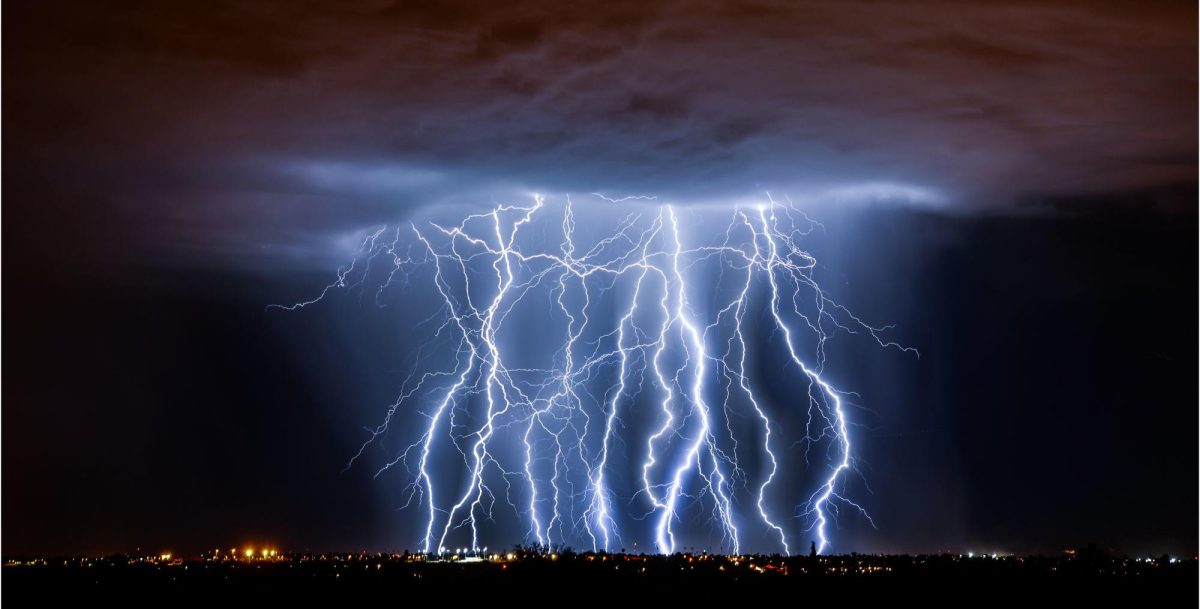Lightning is a natural phenomenon that occurs during thunderstorms when the discharge of electricity in the atmosphere causes a bright flash of light. It is usually accompanied by thunder, which is the sound produced by the expansion of rapidly heated air caused by the discharge of electricity. Lightning is caused by the buildup of positive and negative charges within a cloud or between a cloud and the ground. When the differences in these charges become too great, a discharge of electricity occurs, which can manifest as lightning.
Approximately 8.6 million lightning strikes take place each day all over the planet, each moving at a speed of more than 320,000 kilometers per hour and generating a tremendous amount of electricity.
Have you ever wondered why lightning zigzags? Scientists have argued over the reasons why lightning zigzags and how it is related to the thundercloud above for the last 50 years.
There hasn’t been a definitive explanation until now, with a University of South Australia (UniSA) plasma physicist publishing a landmark paper that solves both mysteries.
Dr. John Lowke, former CSIRO scientist and now a UniSA Adjunct Research Professor, says the physics of lightning has stumped the best scientific minds for decades.
“There are a few textbooks on lightning, but none have explained how the zig-zags (called steps) form, why the electrically conducting column connecting the steps with the cloud remains dark, and how lightning can travel over kilometers,” Dr. Lowke says.
The answer? Singlet-delta metastable oxygen molecules.
Basically, lightning happens when electrons hit oxygen molecules with enough energy to create high-energy singlet delta oxygen molecules. After colliding with the molecules, the “detached” electrons form a highly conducting step – initially luminous – that redistribute the electric field, causing successive steps.
The conducting column connecting the step to the cloud remains dark when electrons attach to neutral oxygen molecules, followed by an immediate detachment of the electrons by singlet delta molecules.
Why is this important?
“We need to understand how lightning is initiated so we can work out how to better protect buildings, airplanes, skyscrapers, valuable churches, and people,” Dr. Lowke says.
While it is rare for humans to be hit by lightning, buildings are hit many times, especially tall and isolated ones (the Empire State Building is hit about 25 times each year).
The solution to protecting structures from lightning strikes has remained the same for hundreds of years.
A lightning rod invented by Benjamin Franklin in 1752 is basically a thick fencing wire that is attached to the top of a building and connected to the ground. It is designed to attract lightning and earth the electric charge, saving the building from being damaged.
“These Franklin rods are required for all buildings and churches today, but the uncertain factor is how many are needed on each structure,” Dr. Lowke says.
There are also hundreds of structures that are currently not protected, including shelter sheds in parks, often made from galvanized iron, and supported by wooden posts.
This could change with new Australian lightning protection standards recommending that these roofs be earthed. Dr. Lowke was a committee member of Standards Australia recommending this change.
“Improving lightning protection is so important now due to more extreme weather events from climate change. Also, while the development of environmentally-friendly composite materials in aircraft is improving fuel efficiency, these materials significantly increase the risk of damage from lightning, so we need to look at additional protection measures.
“The more we know about how lightning occurs, the better informed we will be in designing our built environment,” Dr. Lowke says.
Reference: “Toward a theory of ‘stepped-leaders’ in lightning” by John J. Lowke and Endre J. Szili, 13 December 2022, Journal of Physics D: Applied Physics.
DOI: 10.1088/1361-6463/aca103
Share your story or advertise with us: Whatsapp: +2347068606071 Email: info@newspotng.com











